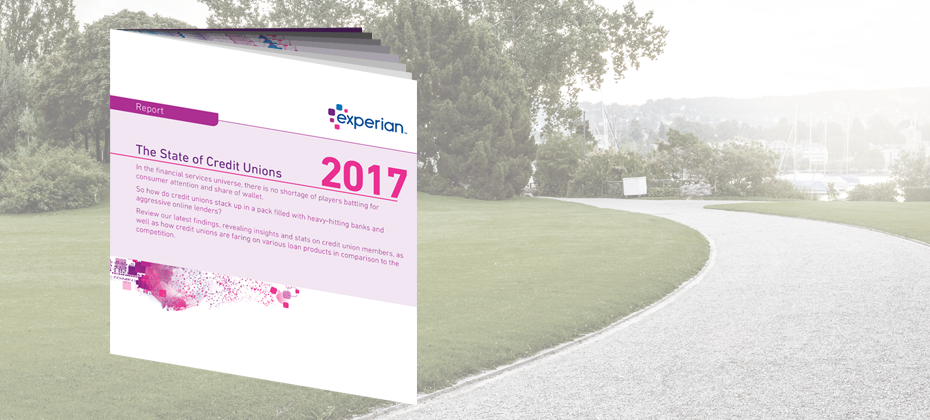Tag: credit unions

Financial institutions preparing for the launch of the Financial Accounting Standard Board’s (FASB) new current expected credit loss model, or CECL, may have concerns when it comes to preparedness, implications and overall impact. Gavin Harding, Experian’s Senior Business Consultant and Jose Tagunicar, Director of Product Management, tackled some of the tough questions posed by the new accounting standard. Check out what they had to say: Q: How can financial institutions begin the CECL transition process? JT: To prepare for the CECL transition process, companies should conduct an operational readiness review, which includes: Analyzing your data for existing gaps. Determining important milestones and preparing for implementation with a detailed roadmap. Running different loss methods to compare results. Once losses are calculated, you’ll want to select the best methodology based on your portfolio. Q: What is required to comply with CECL? GH: Complying with CECL may require financial institutions to gather, store and calculate more data than before. To satisfy CECL requirements, financial institutions will need to focus on end-to-end management, determine estimation approaches that will produce reasonable and supportable forecasts and automate their technology and platforms. Additionally, well-documented CECL estimations will require integrated workflows and incremental governance. Q: What should organizations look for in a partner that assists in measuring expected credit losses under CECL? GH: It’s expected that many financial institutions will use third-party vendors to help them implement CECL. Third-party solutions can help institutions prepare for the organization and operation implications by developing an effective data strategy plan and quantifying the impact of various forecasted conditions. The right third-party partner will deliver an integrated framework that empowers clients to optimize their data, enhance their modeling expertise and ensure policies and procedures supporting model governance are regulatory compliant. Q: What is CECL’s impact on financial institutions? How does the impact for credit unions/smaller lenders differ (if at all)? GH: CECL will have a significant effect on financial institutions’ accounting, modeling and forecasting. It also heavily impacts their allowance for credit losses and financial statements. Financial institutions must educate their investors and shareholders about how CECL-driven disclosure and reporting changes could potentially alter their bottom line. CECL’s requirements entail data that most credit unions and smaller lenders haven’t been actively storing and saving, leaving them with historical data that may not have been recorded or will be inaccessible when it’s needed for a CECL calculation. Q: How can Experian help with CECL compliance? JT: At Experian, we have one simple goal in mind when it comes to CECL compliance: how can we make it easier for our clients? Our Ascend CECL ForecasterTM, in partnership with Oliver Wyman, allows our clients to create CECL forecasts in a fraction of the time it normally takes, using a simple, configurable application that accurately predicts expected losses. The Ascend CECL Forecaster enables you to: Fulfill data requirements: We don’t ask you to gather, prepare or submit any data. The application is comprised of Experian’s extensive historical data, delivered via the Ascend Technology PlatformTM, economic data from Oxford Economics, as well as the auto and home valuation data needed to generate CECL forecasts for each unsecured and secured lending product in your portfolio. Leverage innovative technology: The application uses advanced machine learning models built on 15 years of industry-leading credit data using high-quality Oliver Wyman loan level models. Simplify processes: One of the biggest challenges our clients face is the amount of time and analytical effort it takes to create one CECL forecast, much less several that can be compared for optimal results. With the Ascend CECL Forecaster, creating a forecast is a simple process that can be delivered quickly and accurately. Q: What are immediate next steps? JT: As mentioned, complying with CECL may require you to gather, store and calculate more data than before. Therefore, it’s important that companies act now to better prepare. Immediate next steps include: Establishing your loss forecast methodology: CECL will require a new methodology, making it essential to take advantage of advanced statistical techniques and third-party solutions. Making additional reserves available: It’s imperative to understand how CECL impacts both revenue and profit. According to some estimates, banks will need to increase their reserves by up to 50% to comply with CECL requirements. Preparing your board and investors: Make sure key stakeholders are aware of the potential costs and profit impacts that these changes will have on your bottom line. Speak with an expert

There’s no shortage of buzz around fintechs shifting from marketplace challengers to industry collaborators. Regardless of fintech’s general reputation as market disruptors, a case can certainly be made for building partnerships with traditional financial institutions by leveraging the individual strengths of each organization. According to the World FinTech Report 2018, 75.5% of fintechs surveyed selected “collaborate with traditional firms” as their main objective. Whereas fintechs have agility, a singular focus on the customer, and an absence of legacy systems, traditional Financial Institutions have embedded infrastructure, scale, reach, and are well-versed with regulatory requirements. By partnering together, fintechs and other Financial Institutions can combine strengths to generate real business results and impact the customer experience. New stories are emerging – stories that illustrate positive outcomes beyond efforts exerted by one side alone. A recent report sponsored by Experian and conducted by the Filene Research Institute further explores the results of fintech and traditional FI partnerships by examining the experiences of six organizations: The outcomes of these relationships are sure to encourage more collaborative partnerships. And while leveraging each organization’s strength is a critical component, there’s much more to consider when developing a strategic approach. In the fast-moving, disruptive world of fintech, just what are the key elements to building a successful collaboration with traditional Financial Institutions? Click here to learn more. More Info on Marketplace Lending Read the Filene Report

With Hispanic Heritage Awareness Month underway and strategic planning season in full swing, the topic of growing membership continues to take front stage for credit unions. Miriam De Dios Woodward (CEO of Coopera Consulting) is an expert on the Hispanic opportunity, working with credit unions to help them grow by expanding the communities they serve. I asked Miriam if she could provide her considerations for credit unions looking to further differentiate their offerings and service levels in 2019 and beyond. There’s never been a better time for credit unions to start (or grow) Hispanic engagement as a differentiation strategy. Lending deeper to this community is one key way to do just that. Financial institutions that don’t will find it increasingly difficult to grow their membership, deposits and loan balances. As you begin your 2019 strategic planning discussions, consider how your credit union could make serving the Hispanic market a differentiation strategy. Below are nine ways to start. 1. Understand your current membership and market through segmentation and analytics. The first step in reaching Hispanics in your community is understanding who they are and what they need. Segment your existing membership and market to determine how many are Hispanic, as well as their language preferences. Use this segmentation to set a baseline for growth of your Hispanic growth strategy, measure ongoing progress and develop new marketing and product strategies. If you don’t have the bandwidth and resources to conduct this segmentation in-house, seek partners to help. 2. Determine the product gaps that exist and where you can deepen relationships. After you understand your current Hispanic membership and market, you will want to identify opportunities to improve the member experience, including your lending program. For example, if you notice Hispanics are not obtaining mortgages at the same rate as non-Hispanics, look at ways to bridge the gaps and address the root causes (i.e., more first-time homebuyer education and more collaboration with culturally relevant providers across the homebuying experience). Also, consider how you might adapt personal loans to meet the needs of consumers, such as paying for immigration expenses or emergencies with family in Latin America. 3. Explore alternative credit scoring models. Many credit products accessible to underserved consumers feature one-size-fits-all rates and fees, which means they aren’t priced according to risk. Just because a consumer is unscoreable by most traditional credit scoring models doesn’t mean he or she won’t be able to pay back a loan or does not have a payment history. Several alternative models available today can help lenders better evaluate a consumer’s ability to repay. Alternative sources of consumer data, such as utility records, cell phone payments, medical payments, insurance payments, remittance receipts, direct deposit histories and more, can be used to build better risk models. Armed with this information – and with the proper programs in place to ensure compliance with regulatory requirements and privacy laws – credit unions can continue making responsible lending decisions and grow their portfolio while better serving the underserved. 4. Consider how you can help more Hispanic members realize their desire to become homeowners. In 2017, more than 167,000 Hispanics purchased a first home, taking the total number of Hispanic homeowners to nearly 7.5 million (46.2 percent of Hispanic households). Hispanics are the only demographic to have increased their rate of homeownership for the last three consecutive years. What’s more, 9 percent of Hispanics are planning to buy a house in the next 12 months, compared to 6 percent of non-Hispanics. This means Hispanics, who represent about 18 percent of the U.S. population, may represent 22 percent of all new home buyers in the next year. By offering a variety of home loan options supported by culturally relevant education, credit unions can help more Hispanics realize the dream of homeownership. 5. Go beyond indirect lending for auto loans. The number of cars purchased by Hispanics in the U.S. is projected to double in the period between 2010 and 2020. It’s estimated that new car sales to Hispanics will grow by 8 percent over the next five years, compared to a 2 percent decline among the total market. Consider connecting with local car dealers that serve the Hispanic market. Build a pre-car buying relationship with members rather than waiting until after they’ve made their decision. Connect with them after they’ve made the purchase, as well. 6. Consider how you can help Hispanic entrepreneurs and small business owners. Hispanics are nine times more likely than whites to take out a small business loan in the next five years. Invest in products and resources to help Hispanic entrepreneurs, such as small business-friendly loans, microloans, Individual Taxpayer Identification Number (ITIN) loans, credit-building loans and small-business financial education. Also, consider partnering with organizations that offer small business assistance, such as local Hispanic chambers of commerce and small business incubators. 7. Rethink your credit card offerings. Credit card spending among underserved consumers has grown rapidly for several consecutive years. The Center for Financial Services Innovation (CFSI) estimates underserved consumers will spend $37.6 billion on retail credit cards, $8.3 billion on subprime credit cards and $0.4 billion on secured credit cards in 2018. Consider mapping out a strategy to evolve your credit card offerings in a way most likely to benefit the unique underserved populations in your market. Finding success with a credit-builder product like a secured card isn’t a quick fix. Issuers must take the necessary steps to comply with several regulations, including Ability to Repay rules. Cards and marketing teams will need to collaborate closely to execute sales, communication and, importantly, cardmember education plans. There must also be a good program in place for graduating cardmembers into appropriate products as their improving credit profiles warrant. If offering rewards-based products, ensure the rewards include culturally relevant offerings. Work with your credit card providers. 8. Don’t forget about lines of credit. Traditional credit lines are often overlooked as product offerings for Hispanic consumers. These products can provide flexible funding opportunities for a variety of uses such as making home improvements, helping family abroad with emergencies, preparing families for kids entering college and other expenses. Members who are homeowners and have equity in their homes have a potential untapped source to borrow cash. 9. Get innovative. Hispanic consumers are twice as likely to research financial products and services using mobile apps. Many fintech companies have developed apps to help Hispanics meet immediate financial needs, such as paying off debt and saving for short-term goals. Others encourage long-term financial planning. Still other startups have developed new plans that are basically mini-loans shoppers can take out for specific purchases when checking out at stores and online sites that participate. Consider how your credit union might partner with innovative fintech companies like these to offer relevant, digital financial services to Hispanics in your community. Next Steps Although there’s more to a robust Hispanic outreach program than we can fit in one article, credit unions that bring the nine topics highlighted above to their 2019 strategic planning sessions will be in an outstanding position to differentiate themselves through Hispanic engagement. Experian is proud to be the only credit bureau with a team 100% dedicated to the Credit Union movement and sharing industry best practices from experts like Miriam De Dios Woodward. Our continued focus is providing solutions that enable credit unions to continue to grow, protect and serve their field of membership. We can provide a more complete view of members and potential members credit behavior with alternative credit data. By pulling in new data sources that include alternative financing, utility and rental payments, Experian provides credit unions a more holistic picture, helping to improve credit access and decisioning for millions of consumers who may otherwise be overlooked. About Miriam De Dios Woodward Miriam De Dios Woodward is the CEO of Coopera, a strategy consulting firm that helps credit unions and other organizations reach and serve the Hispanic market as an opportunity for growth and financial inclusion. She was named a 2016 Woman to Watch by Credit Union Times and 2015 Latino Business Person of the Year by the League of United Latin American Citizens of Iowa. Miriam earned her bachelor’s degree from Iowa State University, her MBA from the University of Iowa and is a graduate of Harvard Business School’s Leading Change and Organizational Renewal executive program.

National Hispanic Heritage Month is observed each year from Sept. 15 to Oct. 15, by celebrating the histories, cultures and contributions of American citizens whose ancestors came from Spain, Mexico, the Caribbean and Central and South America. With one in six U.S. residents being Hispanic, all communities are impacted by the contributions of Hispanics—and now is a great time for financial institutions to reflect upon their largest growth opportunity. What is the best way to reach Hispanic consumers? What are the nuances of the Hispanic market? What are some of the myths FIs have about the Hispanic community? Miriam De Dios Woodward, CEO of Coopera, a Hispanic market strategy firm that helps credit unions reach and serve the Hispanic consumer segment, recently chatted with Experian about serving the Hispanic market. Here she shares her thoughts: Are there special considerations or insights credit unions should know when serving the Hispanic market? It’s very important to understand the Hispanic market is nuanced. There are 22 Spanish-speaking Latin American countries from which prospective Hispanic credit union members may hail. Add to that the fact, many U.S.-born Hispanics think, speak and behave differently than their parents and grandparents. Layer over this the existence of segments like small business owners or Millennials and you can begin to see the complexities involved with targeting and serving a multi-faceted Hispanic market. A smart Hispanic membership growth strategy will be based on segmentation, so credit unions should be willing to invest upfront in good market research. You have to understand what your local Hispanic community really looks like before you can mobilize your teams and leadership around serving them well. Are there particular consumer trends you have seen in the Hispanic community that impact the financial services space? The increasing digitization of financial services is a trend that definitely impacts Hispanic consumers. That’s because Hispanics typically over-index in studies that look at consumer use of connected devices, online banking and social media. A good Hispanic membership growth strategy will take mobile and digital products and services into account and will be tailored to the specific needs of local Hispanic communities. People often assume the Hispanic market is largely centered in states like California, Arizona, Texas and New Mexico. Are you finding that credit unions outside of these southwestern states are discovering they too need to build out a strategy in partnering with this consumer base? Absolutely. Hispanic population growth is happening far beyond so-called “gateway states” like those you mention above. In fact, states such as North Dakota, Kentucky, Louisiana, Delaware and Maryland actually saw the largest Hispanic population growth between 2007 and 2014. Midwestern states, too, are discovering just as many opportunities for engagement with their own growing numbers of Hispanic residents. Iowa and Wisconsin, for instance, each experienced explosive growth rates and now count Hispanics among one of the largest, fastest-growing and youngest groups in their cities. With a comprehensive and strategic approach to Hispanic membership growth, credit unions in unexpected places can become the preferred financial institution for this important segment. That’s because a great number of Hispanics in the U.S. are not tethered to an existing financial relationship. For more on this, check out our recent white paper Hispanic Member Growth Not Just for 'Gateway States' Anymore. What are the biggest myths financial services companies have about the Hispanic community? While there continue to be many misconceptions about the multifaceted Hispanic community, the following three continue to prevail most heavily. Myth: Hispanic consumers are only interested in transaction-based products. Check cashing and remittances are necessary services for many first generation Hispanic segments. At the same time, many of these consumers are interested in long-term relationships. Our own research indicates product penetration increases at a faster rate among Hispanic members as compared to non-Hispanic members when credit unions execute a strategic plan. Myth: The majority of Hispanics are undocumented. This misperception has been somewhat renewed this year with all the political back and forth on the subject of immigration. That’s why it’s so important for credit unions to educate – from the inside out – stakeholders on the facts. Many people do not know, for instance, that of the country's more than 52 million Hispanics, most are native-born Americans, and nearly three in four are U.S. citizens. Myth: The law prevents us from serving immigrants. There are many forms of acceptable government issued identification, such as passports and consular cards that are in full compliance with the Patriot Act and Customer Identification Program rules. In addition, financial institutions can compliantly lend to individuals who have Individual Taxpayer Identification Numbers. In fact, the NCUA wants credit unions to serve Hispanic members, including Hispanic immigrants. For more on this, check out the recording of the NCUA hosted panel, “Unique Challenges and Opportunities Serving Hispanic Credit Union Members.” For a credit union seeking to build a relationship with this community, what are your recommendations? Are there particular products or touchpoints they should focus on? Solidifying the right organizational mentality first is an important best practice. Building buy-in, doing the market research, developing a comprehensive strategy based on segmentation and defining what success truly looks like – these are all a part of laying the foundation for success with the Hispanic market. Credit unions should also be smart about talking to and partnering with local organizations that already know – and are trusted by – Hispanic residents. Conducting focus groups with the leaders of these groups and the people they serve can give credit unions a wealth of information about the makeup of their local Hispanic community and the value they might bring to the community.

The State of Credit Unions 2017 In the financial services universe, there is no shortage of players battling for consumer attention and share of wallet. Here’s a look at how one player — credit unions — has fared over the past two years compared to banks and online lenders: Personal loans grew 2%, but online lenders and finance companies still own 51% of this market. Card originations at credit unions increased 18%, with total credit limits on newly originated cards approaching $100 billion in Q1 2017. Mortgage market share rose 7% for credit unions, while banks lost share to online lenders. Auto originations increased 25% for credit unions to 1.93 million accounts in Q1 2017. Whether your organization is a credit union, a financial institution or an online lender, a “service first” mentality is essential for success in this highly competitive market. The State of Credit Unions 2017

How do credit unions stack up in a pack filled with heavy-hitting banks and aggressive online lenders? Do credit scores, debt levels and utilization rates look different between credit union members and non-credit union members? Where is the greatest concentration of credit unions in the country? Experian took a deep dive into the data and performance surrounding the credit union universe in their first-ever “State of Credit Unions” report, featuring insights utilizing data from both 2015 and 2017. What did the analysis reveal? “In general, we saw credit unions continuing to increase their auto lending market share, but we also saw them growing their member relationships and increasing market share in mortgage, personal loan and bankcard,” said Michelle Cocchiarella, the Experian analyst who pulled the data. A few of the key data points include: Credit union auto originations increased from 1.54M new accounts in Q1 2015 to 1.93M in Q1 2017 – a 25% increase. And not only did originations rise dramatically in this space, but credit unions topped banks, captives and other finance sources. Credit union auto market share rose 5% between Q1 2015 and Q1 2017, while bank market share declined by 4%. Credit unions also saw growth in the personal loan arena, with market share rising 2% between Q1 2015 and Q1 2017. Still, with the rise of online lenders, that sector saw a 7% increase during the same period. Banks declined by 5%. While most bankcards are opened with banks, credit unions did experience an 18% increase in bankcard originations from Q1 2015 to Q1 2017. Market share rose 1% between Q1 2015 and Q1 2017 for credit unions in the bankcard space. Banks reign with market share at 96%. Credit union mortgage market share rose 7% between Q1 2015 and Q1 2017. Banks declined by 4%. “Collectively, the credit union space is enjoying remarkable membership and loan growth,” said Scott Butterfield, principal of Your Credit Union Partner, a consulting agency to credit union leaders. “However, this bountiful experience is not enjoyed at all credit unions. The financial services environment has never been more competitive. The best credit unions are relentless at investigating a better way to find and serve more members, and as such, are seeing great growth.” For the complete results, including insights on how credit union members with at least one trade compare to non-credit union members, access the report on our credit union insights page.

For an industry that has grown accustomed to sustained year-over-year growth, recent trends are concerning. The automotive industry continued to make progress in the fourth quarter of 2016 as total automotive loan balances grew 8.6% over the previous year and exceeded $1 trillion. However, the positive trend is slowing and 2017 may be the first year since 2009 to see a market contraction. With interest rates on the rise and demand peaking, automotive lending will continue to become more competitive. Lenders can be successful in this environment, but must implement data-driven targeting strategies. Credit Unions Triumph Credit unions experienced the largest year-over-year growth in the fourth quarter of 2016, increasing 15% over the previous period. As lending faces increasing headwinds amid rising rates, credit unions can continue to play a greater role by offering members more competitive rates. For many consumers, a casual weekend trip to the auto mall turns into a big new purchase. Unfortunately, many get caught up in researching the vehicle and don’t think to shop for financing options until they’re in the F&I office. With approximately 25% share of total auto loan balances, credit unions have significant potential to recapture loans of existing members. Successful targeting starts with a review of your portfolio for opportunities with current members who have off-book loans that could be refinanced at a lower rate. After developing a strategy, many credit unions find success targeting these members with refinance offers. Helping members reduce monthly payments and interest expense provides an unexpected service that can deepen loyalty and engagement. But what criteria should you use to identify prospects? Target Receptive Consumers As originations continue to slow, marketing response rates will as well, leading to reduced marketing ROI. Maintaining performance is possible, but requires a proactive approach. Propensity models can help identify consumers who are more likely to respond, while estimated interest rates can provide insight on who is likely to benefit from refinance offers. Propensity models identify who is most likely to open a new trade. By focusing on these populations, you can cut a mail list in half or more while still focusing on the most viable prospects. It may be okay in a booming economy to send as many offers as possible, but as things slow down, getting more targeted can maintain campaign performance while saving resources for other projects. When it comes to recapture, consumers refinance to reduce their payment, interest rate, or both. Payments can often be reduced simply by ‘resetting’ the clock on a loan, or taking the remaining balance and resetting the term. Many consumers, however, will be aware of their current interest rate and only consider offers that reduce the rate as well. Estimated interest rates can provide valuable insight into a consumer’s current terms. By targeting those with high rates, you are more likely to make an offer that will be accepted. Successful targeting means getting the right message to the right consumers. Propensity models help identify “who” to target while estimated interest rates determine “what” to offer. Combining these two strategies will maximize results in even the most challenging markets. Lend Deeper with Trended Data Much of the growth in the auto market has been driven by relatively low-risk consumers, with more than 60% of outstanding balances rated prime and above. This means hypercompetition and great rates for the best consumers, while those in lower risk tiers are underserved. Many lenders are reluctant to compete for these consumers and avoid taking on additional risk for the portfolio. But trended data holds the key to finding consumers who are currently in a lower risk tier but carry significantly less risk than their current score suggests. In fact, historical data can provide much deeper insight on a consumer’s past use of credit. As an example, consider two consumers with the same risk score at a point in time. While they may be judged as carrying similar risk, trended data shows one has taken out two new trades in the past 6 months and has increasing utilization, while the other is consolidating and paying down balances. They may have the same risk score today, but what will the impact be on your future profitability? Most risk scores take a snapshot approach to gauging risk. While effective in general, it misses out on the nuance of consumers who are trending up or down based on recent behavior. Trended data attributes tell a deeper story and allow lenders to find underserved consumers who carry less risk than their current score suggests. Making timely offers to underserved consumers is a great way to grow your portfolio while managing risk. Uncertain Future The automotive industry has been a bright spot for the US economy for several years. It’s difficult to say what will happen in 2017, but there will likely be a continued slowing in originations. When markets get more competitive, data-driven targeting becomes even more important. Propensity models, estimated interest rates, and trended data should be part of every prescreen campaign. Those that integrate them now will likely shrug off any downturn and continue growing their portfolio by providing valuable and timely offers to their members.

Using digital technology like a big bank How was your holiday? Are the chargebacks rolling in yet? It’s no secret - digital technology like mobile device usage has increased significantly over the years, making it a breeding ground for fraudsters. As credit unions continue to grow their membership, their fraud security treatments need to grow as well. Bigger banks are constantly updating their fraud tools and strategies to fight against cybercrime and, therefore, fraudsters are setting their eyes on credit unions. Even as I write this, fraudsters are searching and targeting credit unions that don’t have their mobile channel secured. They attempt to capitalize on any weakness or opportunity: Registering stolen cards to mobile wallets Taking over an account via mobile banking apps Using a retailers’ mobile app to make fraudulent payments Disabling the SIM card in the victim’s phone and diverting the one-time password sent through text message to their own phones These are clever ways to commit fraud. But credit unions are becoming wise to these new threats and are serious about protecting their members. They are incorporating device intelligence with a solid identity authentication service. This multi-layered approach is essential to securing mobile channels, and protecting your Credit Union from chargebacks. To learn more about our fraud solutions, click here.

The pressures for both credit unions and banks, to generate returns to drive greater earnings are ever present. According to recent data released by the National Credit Union Administration, the nation's 7,019 federally-insured credit unions added 667,000 new members in the first quarter of 2012 to a record of 92.5 million. To offset these pressures, portfolio managers are aggressively expanding their policies and practices to drill more deeply and frequently into their portfolios. Increasingly, this requires the ability to trend consumer credit data, identify specific member metrics, and track those changes over time. Redefining the information your portfolios provide can by key to developing increased ROI. Learn how trended data can help you maximize your strategies and process to produce results in today's complex business environments. Source: How to drill deeper into your portfolio

Despite low demand and a shrinking pool of qualified candidates, loan growth priorities continue to rank high for most small-business lenders – both for small to midsize banks and large financial institutions. Between 2006 and 2010, overall loan applications were down 5 percent where large financial institutions saw small-business loan applications rise 36.5 percent. Banks and credit unions with assets less than $500 million showed the most significant increase of 65 percent. Read more of the blog series: "Getting back in the game – Generating small business applications." Source: Decision Analytics' Blog: Relationship and Transactional Lending Best Practices